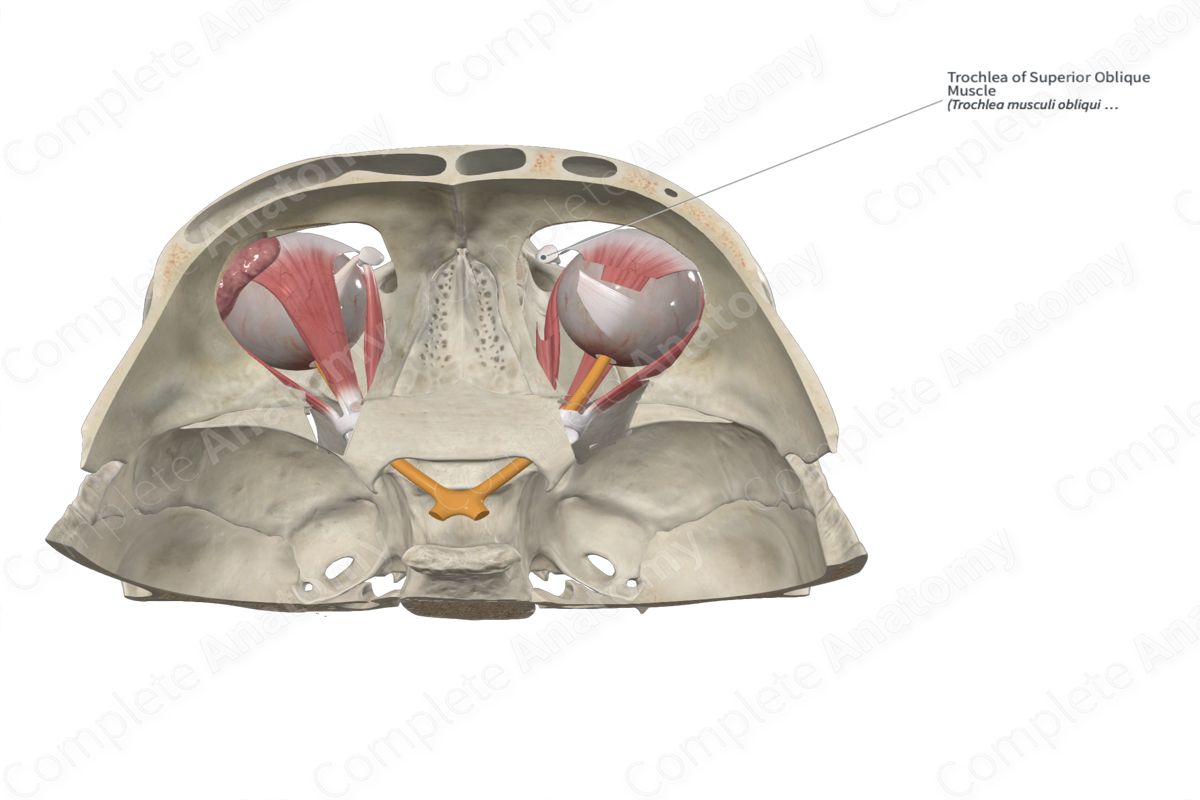
Structure/Morphology
The trochlea of superior oblique muscle is a fibrocartilaginous pulley situated at the superior medial corner of each orbit. The trochlea attaches to a trochlear spine or trochlear fovea on the anteromedial part of the frontal bone. The tendon of the superior oblique muscle passes through the trochlea from which it is separated by a thin and delicate synovial sheath.
Anatomical Relations
The superior oblique muscle originates from behind the eyeball. It passes anteriorly in the superomedial corner of the orbit to reach the trochlea. Here, the muscle becomes a tendinous cord that passes through the trochlea and makes a tight turn changing direction to descend posterolaterally where it attaches to the sclera at the superolateral part of the posterior quadrant of the eyeball.
Function
The trochlea acts as a pulley on the superior oblique muscle so that the force of contraction originates anteriorly and medially. The attachment of the tendon posterolaterally means that when the muscle contracts it rotates the eye around the horizontal (transverse) axis directing the pupil inferiorly (depression). When the eyeball adducted, the movement is more purely depression. Conversely, with the eyeball in some degree of abduction, rotation around the vertical and anteroposterior axes allows lateral (abduction) and medial(intorsion) rotation, respectively.
List of Clinical Correlates
- Trochlear calcification
Learn more about this topic from other Elsevier products





